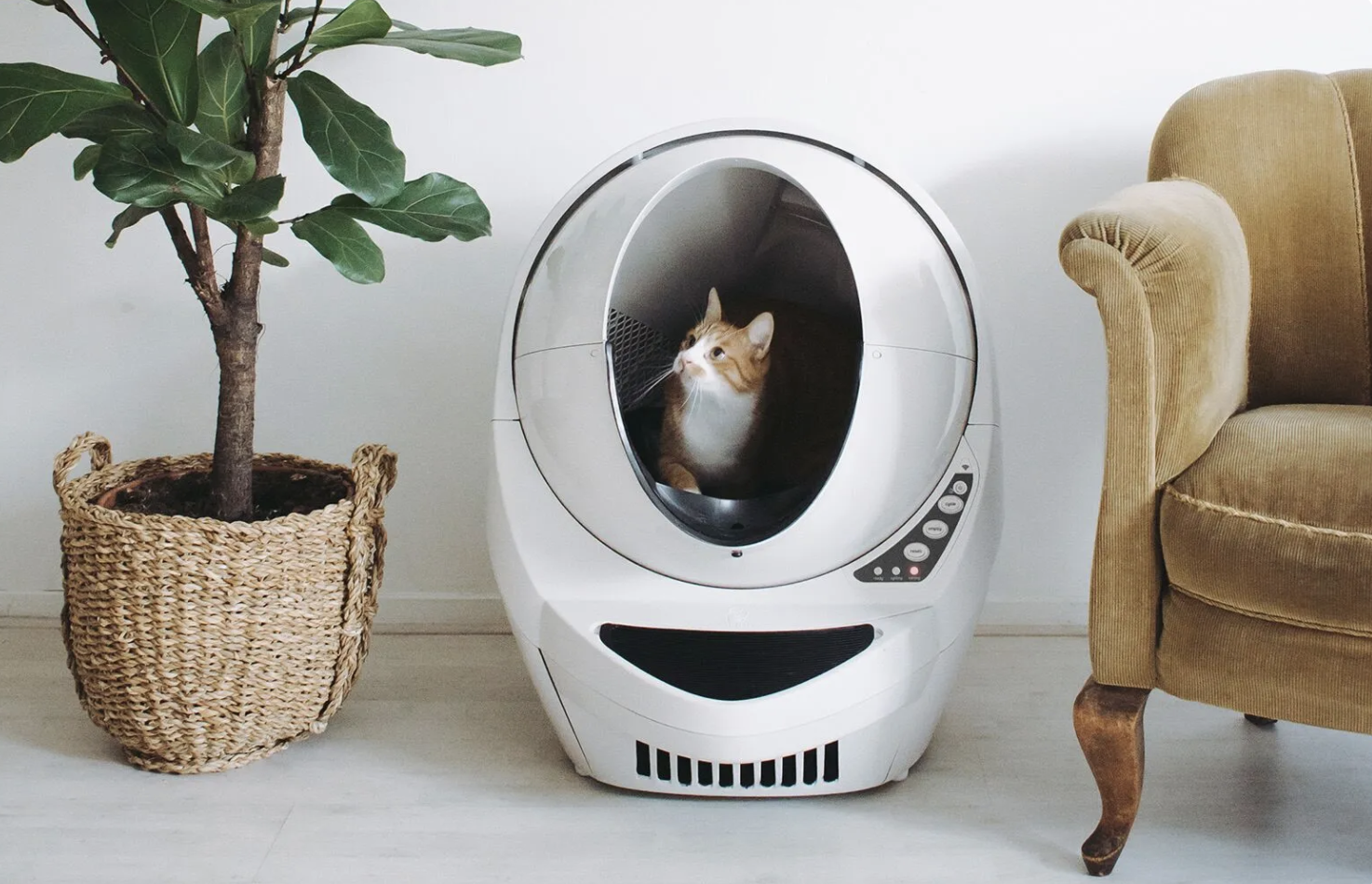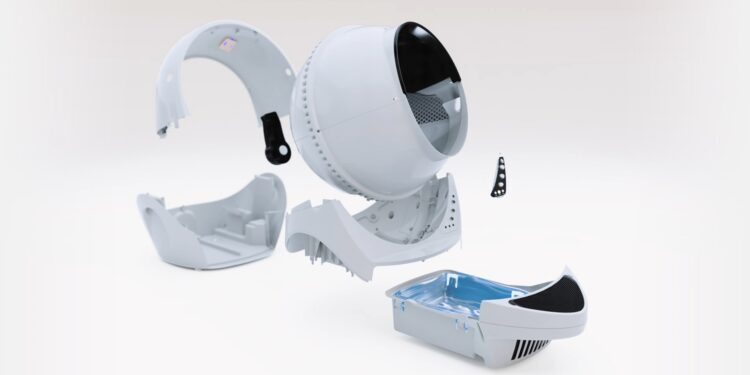In the realm of automated pet care, the Litter Robot 4 Cat Sensor Faults stands as a pinnacle of innovation. This article delves into the intricacies of its cat sensor function, an indispensable feature ensuring the seamless operation of this cutting-edge device.
Brief Overview of the Litter Robot 4 and its Cat Sensor Function
Litter Robot 4 Cat Sensor Faults, a marvel in the domain of automated cat litter management, boasts a sophisticated cat sensor. This sensor, a technological masterpiece, is integral to the device’s functionality, revolutionizing the way pet owners maintain a clean environment for their feline companions.

Importance of the Litter Robot 4 Cat Sensor Faults for Seamless Operation
At the heart of Litter Robot 4’s efficiency lies its cat sensor, a component designed to elevate user experience by accurately detecting cat presence. The significance of this sensor cannot be overstated, as it orchestrates the timely initiation of the cleaning cycle, ensuring optimal cleanliness without manual intervention.
Understanding the Litter Robot 4 Cat Sensor Faults
What are the Litter Robot 4 Cat Sensor Faults?
To comprehend the intricacies of the Litter Robot 4 cat sensor fault, it’s imperative to grasp the technology underpinning this intelligent system. The cat sensor employs infrared technology coupled with advanced algorithms to discern the presence of a cat in the litter box.
Explanation of the Technology Behind the Cat Sensor in Litter Robot 4
The cat sensor relies on infrared beams strategically placed within the Litter Robot 4. When these beams are disrupted by a cat entering or exiting, the sensor triggers the device to commence the cleaning cycle. This seamless integration of technology is a testament to the device’s commitment to efficiency.
Its Role in Detecting Cat Presence and Triggering the Cleaning Cycle
The primary function of the cat sensor is to detect the presence of a cat within the Litter Robot 4. Once identified, the sensor promptly initiates the cleaning cycle, ensuring a hygienic and odor-free environment for both the cat and its owner.
Common Causes of Cat Sensor Fault
Environmental Factors Affecting Sensor Performance
Several environmental factors can impede the optimal performance of the cat sensor, necessitating a closer examination of the surroundings.
- Lighting Conditions: Inadequate or excessive lighting can interfere with the sensor’s ability to accurately detect a cat’s presence.
- Placement of the Litter Robot: Incorrect placement, such as near electronic devices emitting signals, may disrupt the sensor’s functionality.
Mechanical Issues with the Sensor
The cat sensor’s mechanical aspects are susceptible to occasional malfunctions, warranting attention and troubleshooting.
- Sensor Calibration: A misaligned or improperly calibrated sensor can result in false readings.
- Potential Obstructions: Physical obstructions within the sensor area can hinder its ability to function correctly.
Identifying Cat Sensor Faults

Signs of a Faulty Cat Sensor
Recognizing the signs of a malfunctioning cat sensor is pivotal in swiftly addressing issues.
- Irregular Cleaning Cycles: Inconsistencies in the initiation of the cleaning cycle may indicate a cat sensor fault.
- False Positives or Negatives: Incorrect detection of cat presence or absence.
- Unusual Cat Behavior Around the Litter Robot: Cats exhibiting reluctance or anxiety when approaching the device.
Troubleshooting Litter Robot 4 Cat Sensor Faults
A systematic approach to identifying and resolving common cat sensor issues is essential for optimal Litter Robot 4 performance.
- Step-by-Step Guide: A comprehensive guide to diagnosing and rectifying sensor-related problems.
- Checking Sensor Alignment: Ensuring the sensor is correctly aligned for accurate readings.
- Cleaning the Sensor Area: Regular maintenance to prevent dust or litter accumulation affecting sensor performance.
- Verifying Power and Connectivity: Confirming that power sources and connectivity are not contributing to sensor faults.
DIY Fixes for Litter Robot 4 Cat Sensor Faults
Sensor Calibration Tips
Proper sensor calibration is a key aspect of maintaining the Litter Robot 4’s efficiency.
- Walkthrough on Calibrating the Cat Sensor: A step-by-step tutorial on calibrating the cat sensor for optimal performance.
- Importance of Following Manufacturer Guidelines: Adhering to prescribed guidelines to avoid calibration errors.
Environmental Adjustments
Optimizing the environment around the Litter Robot 4 can significantly enhance sensor accuracy.
- How Altering the Litter Robot’s Surroundings Can Impact Sensor Accuracy: Exploring the influence of environmental changes on sensor performance.
- Tips for Creating an Ideal Environment for the Cat Sensor: Practical tips for creating a conducive setting for the cat sensor to operate flawlessly.
Reading Suggestions:Billy String Wife
Seeking Professional Assistance
When DIY Isn’t Enough
Knowing when to seek professional help is crucial for resolving complex cat sensor issues.
- Recognizing When It’s Time to Seek Professional Help: Indications that the issue surpasses DIY troubleshooting.
- Contacting Litter Robot Customer Support: Utilizing available customer support channels for expert assistance.
Warranty Coverage
Understanding the warranty coverage of the Litter Robot 4 is essential for users facing sensor-related challenges.

- Overview of Litter Robot 4 Warranty and its Relevance to Sensor Issues: A detailed explanation of warranty coverage.
- Steps to Take If the Product is Still Under Warranty: Guidance on the necessary steps for warranty-related concerns.
Upgrading for Enhanced Performance
Firmware Updates
Regular firmware updates play a pivotal role in addressing and resolving cat sensor issues.
- Importance of Keeping the Litter Robot’s Firmware Up to Date: Highlighting the significance of firmware updates for overall device performance.
- How Updates May Address and Resolve Sensor Issues: Understanding the impact of firmware updates on cat sensor functionality.
Optional Accessories
Exploring additional accessories that complement and enhance the cat sensor’s capabilities.
- Exploring Accessories That Can Enhance the Cat Sensor’s Functionality: A curated list of accessories designed to augment sensor performance.
- User Testimonials on Improved Performance After Upgrades: Real-life experiences of users who witnessed improved cat sensor performance after incorporating optional accessories.
User Experiences
Compilation of Real-Life Stories from Litter Robot 4 Users
Gathering and sharing user experiences provides valuable insights into overcoming cat sensor faults.
- How They Tackled and Overcame Cat Sensor Faults: Anecdotes from Litter Robot 4 users detailing their journey in resolving cat sensor issues.
Conclusion
In summary, the Litter Robot 4, with its advanced cat sensor technology, epitomizes convenience and hygiene in cat care. While challenges may arise, a proactive approach, coupled with user testimonials and expert assistance, ensures a hassle-free experience. As users navigate the intricacies of cat sensor faults, the potential for a seamless and efficient Litter Robot 4 experience remains promising.
FAQ’s
Q1: What is the primary function of the Litter Robot 4 cat sensor?
A1: The cat sensor in Litter Robot 4 serves the crucial role of detecting the presence of a cat within the device, triggering the cleaning cycle for optimal hygiene.
Q2: How does the cat sensor work in Litter Robot 4?
A2: The cat sensor utilizes infrared beams strategically placed within the device. When these beams are disrupted by a cat entering or exiting, the sensor promptly initiates the cleaning cycle.
Q3: What are the common causes of cat sensor faults in Litter Robot 4?
A3: Cat sensor faults can arise due to environmental factors, including lighting conditions and improper placement of the device. Mechanical issues such as sensor calibration errors and potential obstructions can also contribute to faults.
Q4: What signs indicate a faulty cat sensor in Litter Robot 4?
A4: Signs of a faulty cat sensor include irregular cleaning cycles, false positives or negatives in cat detection, and unusual cat behavior around the Litter Robot.
Q5: How can users troubleshoot the Litter Robot 4 cat sensor fault?
A5: Users can follow a step-by-step guide to diagnose and resolve common problems, including checking sensor alignment, cleaning the sensor area, and verifying power and connectivity.
Q6: What are the DIY fixes for the Litter Robot 4 cat sensor fault?
A6: DIY fixes include sensor calibration tips, providing a walkthrough on calibrating the cat sensor for optimal performance, and making environmental adjustments to create an ideal setting for the sensor.
Q7: When should users seek professional assistance for a Litter Robot 4 cat sensor fault?
A7: Users should consider professional assistance when DIY troubleshooting isn’t effective, and issues persist. Contacting Litter Robot customer support is recommended for expert guidance.
Q8: What warranty coverage does Litter Robot 4 offer for cat sensor-related concerns?
A8: Litter Robot 4 provides warranty coverage, and users should refer to the warranty terms for an overview of coverage. Steps to take if the product is still under warranty are outlined for user convenience.
Q9: How can users upgrade Litter Robot 4 for enhanced cat sensor performance?
A9: Users can ensure optimal cat sensor performance by keeping the device’s firmware up to date. Additionally, exploring optional accessories designed to enhance the cat sensor’s functionality is recommended.
Q10: Are there real-life user experiences of overcoming the Litter Robot 4 cat sensor fault?
A10: Yes, user testimonials highlight how individuals have tackled and overcome cat sensor faults in Litter Robot 4, offering insights into practical solutions and successful experiences.
Q11: What are the key points to consider in the conclusion regarding Litter Robot 4 cat sensor faults?
A11: The conclusion recaps key strategies, provides encouragement for users facing cat sensor challenges, and emphasizes the potential for a hassle-free Litter Robot 4 experience with proactive measures.





























